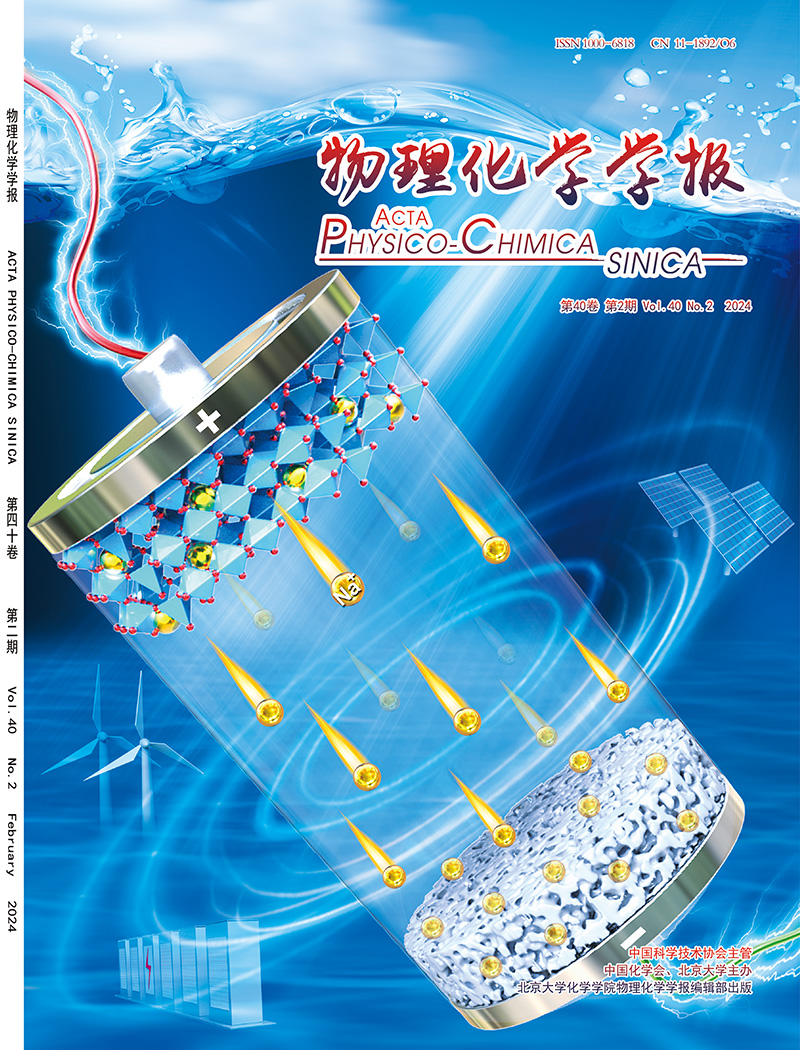Bandgap and adsorption engineering of carbon dots/TiO2 S-scheme heterojunctions for enhanced photocatalytic CO2 methanation
IF 13.5
2区 化学
Q1 CHEMISTRY, PHYSICAL
引用次数: 0
Abstract
S-scheme heterojunctions have garnered significant interest in photocatalytic CO2 conversion to valuable products (e.g., CH4) due to their enhanced charge separation and robust redox capabilities. Carbon dots (CDs), with their tunable band structures and light absorption ranges, show particular promise in constructing efficient S-scheme photocatalytic systems. Nevertheless, the critical roles of CDs' band alignment and surface adsorption properties in determining heterojunction configuration, charge carrier kinetics, and ultimately CO2 activation/product selectivity distribution remain insufficiently explored. Herein, we construct four CDs/TiO2 heterojunctions using CDs synthesized from varied carbon sources, in which S-scheme heterojunctions were successfully constructed based on cost-effective coal pitch (C-GQDs, 1.75 nm), glucose (G-CQDs, 1.84 nm), and acetone (CQDs-X, 1.82 nm) carbon sources, whereas Type-I heterojunctions were formed by carbon black based CDs (GQDs-A, 1.92 nm). Systematic investigations reveal that both the band structure and adsorption characteristics of CDs play important roles in the charge transfer path and separation efficiency, CO2 adsorption and activation capacities, and product selectivity in photocatalytic CO2 reduction. Remarkably, the introduction of CDs significantly broadens the photo-response range compared to fresh TiO2, and in particular, the C-GQDs/TiO2 exhibits exceptional performance with a CH4 production rate of 32.7 μmol·g−1·h−1, surpassing TiO2 by 6.3-fold and outperforming GQDs-A/TiO2, CQDs-X/TiO2, and G-CQDs/TiO2 by factors of 3.8, 2.7, and 2.3, respectively. This heterojunction simultaneously achieves 72.6 % CH4 selectivity and 98.1 % hydrocarbons selectivity (encompassing CH4, C2H6, C2H4, and C3H8). In contrast, composites incorporating GQDs-A, CQDs-X, or G-CQDs exhibit substantially diminished CH4 selectivity (<40.0 %). The high CH4 production rate and selectivity of C-GQDs/TiO2 can be attributed to its unique S-scheme heterojunction structure, higher reduction potential, and well-matched CO2 and H2O adsorption and activation capabilities. This study provides unique insights into the efficient photoreduction of CO2 to CH4 driven by the S-scheme heterojunction electron transfer pathway in CDs/TiO2 photocatalysts.

碳点/TiO2 s型异质结光催化CO2甲烷化的带隙与吸附工程
s方案异质结由于其增强的电荷分离和强大的氧化还原能力,在光催化CO2转化为有价值的产物(例如CH4)方面获得了极大的兴趣。碳点(CDs)具有可调谐的能带结构和光吸收范围,在构建高效的S-scheme光催化体系中具有特殊的应用前景。然而,CDs的能带取向和表面吸附特性在决定异质结结构、载流子动力学以及最终的CO2活化/产物选择性分布方面的关键作用仍未得到充分探讨。本文中,我们利用不同碳源合成的CDs构建了4个CDs/TiO2异质结,其中s型异质结是基于成本效益高的煤沥青(C-GQDs, 1.75 nm)、葡萄糖(G-CQDs, 1.84 nm)和丙酮(CQDs-X, 1.82 nm)碳源构建的,而i型异质结是由炭黑基CDs (GQDs-A, 1.92 nm)构建的。系统研究表明,CDs的能带结构和吸附特性对光催化CO2还原过程中的电荷转移路径和分离效率、CO2吸附和活化能力以及产物选择性都有重要影响。其中,C-GQDs/TiO2的CH4产率为32.7 μmol·g−1·h−1,是TiO2的6.3倍,分别是GQDs-A/TiO2、CQDs-X/TiO2和g - cqds /TiO2的3.8倍、2.7倍和2.3倍。该异质结同时达到72.6%的CH4选择性和98.1%的碳氢化合物选择性(包括CH4, C2H6, C2H4和C3H8)。相比之下,含有GQDs-A、CQDs-X或G-CQDs的复合材料CH4选择性显著降低(40.0%)。C-GQDs/TiO2具有较高的CH4产率和选择性,这主要归功于其独特的s型异质结结构、较高的还原电位以及匹配良好的CO2和H2O吸附和活化能力。本研究对CDs/TiO2光催化剂中S-scheme异质结电子转移途径驱动的CO2光还原为CH4提供了独特的见解。
本文章由计算机程序翻译,如有差异,请以英文原文为准。
求助全文
约1分钟内获得全文
求助全文

 求助内容:
求助内容: 应助结果提醒方式:
应助结果提醒方式:


